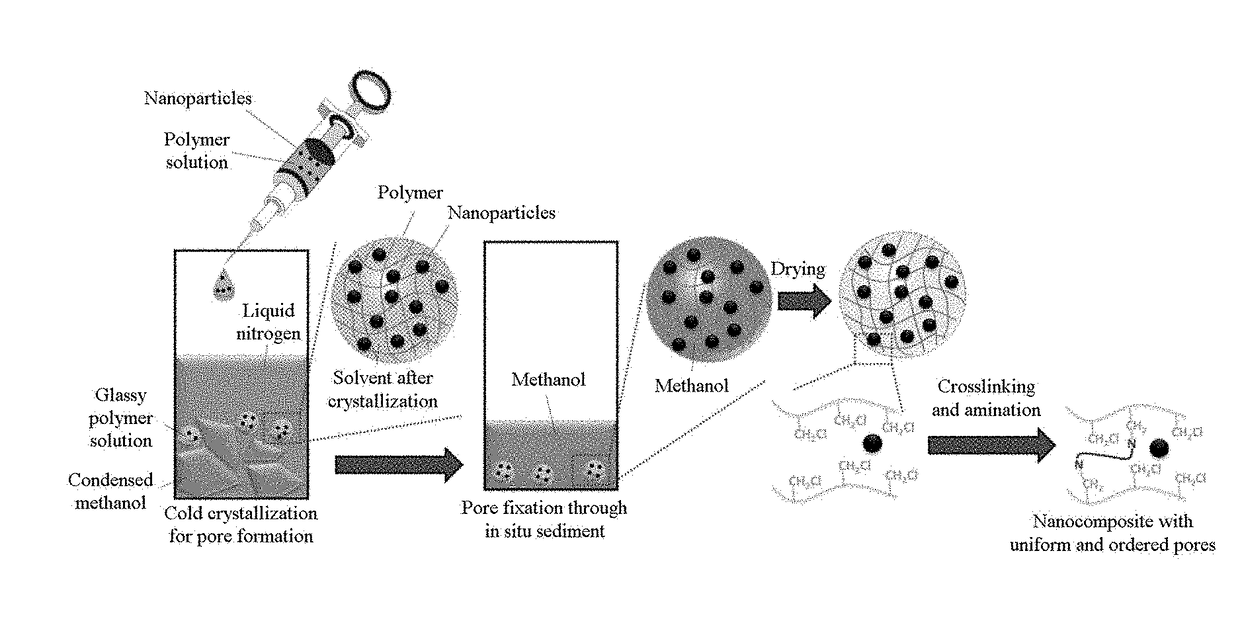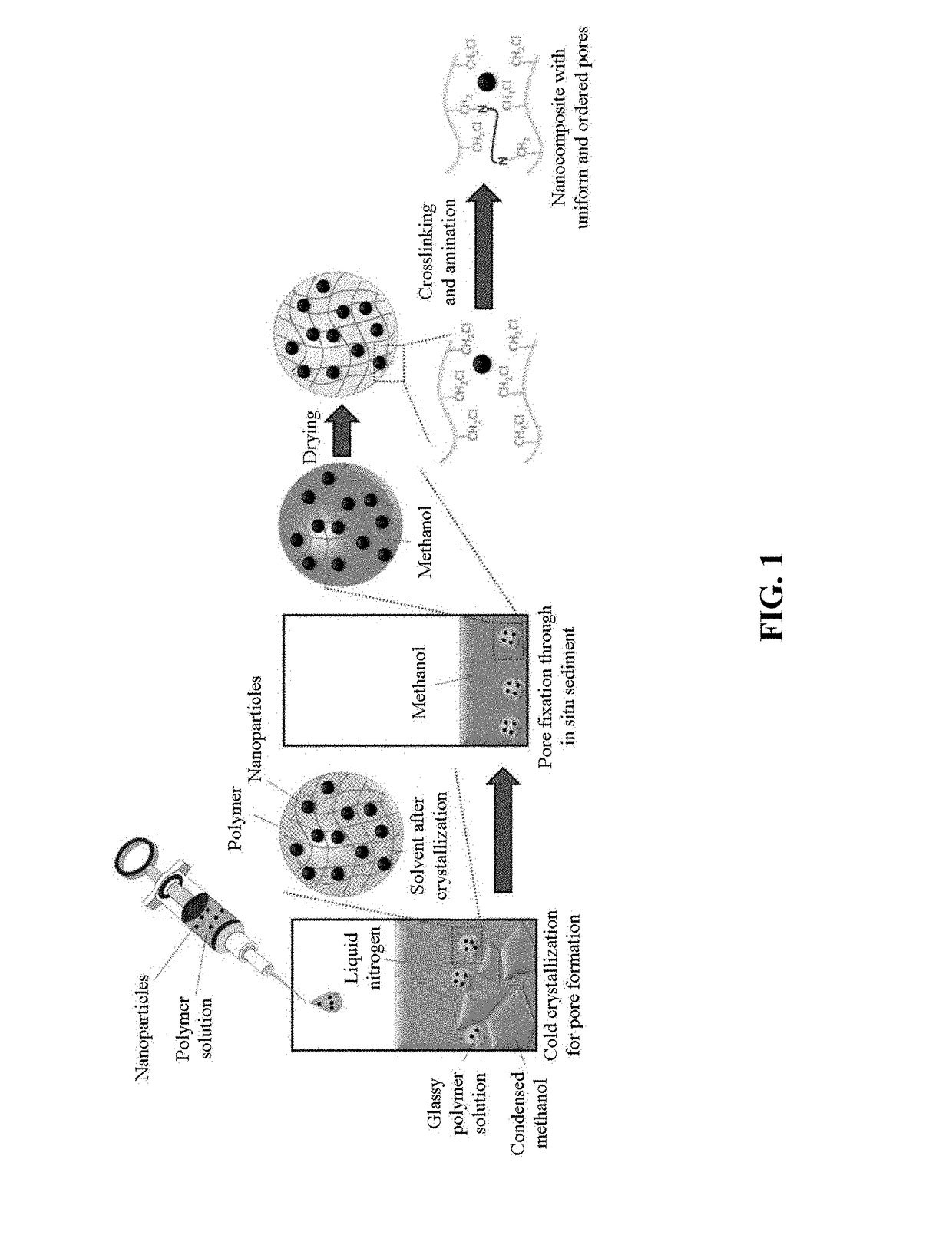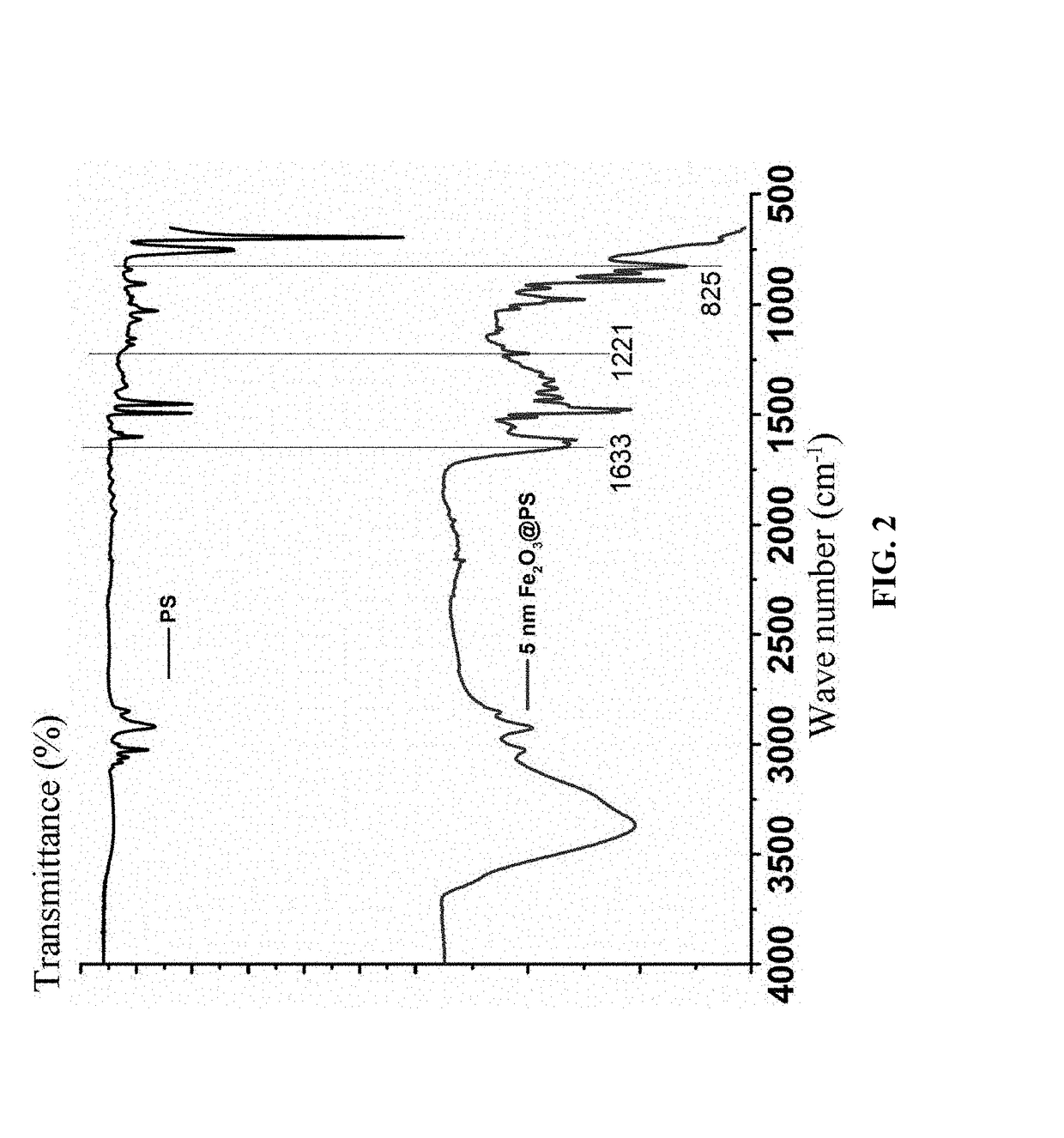Resin nanocomposite, method for preparing the same, and method for treating sewage with the same
- Summary
- Abstract
- Description
- Claims
- Application Information
AI Technical Summary
Benefits of technology
Problems solved by technology
Method used
Image
Examples
example 1
[0038]1) 30 g of a polystyrene having a molecular weight of 190 thousand and 10 g of a chloromethyl polystyrene were mixed and dissolved in 200 mL of N,N-dimethylformamide. Then, 6 g of iron oxide nanoparticles (self-made) having an average diameter of 5 nm was added and stirred to be fully dissolved to yield a mixed solution.
[0039]2) 1000 mL of methanol was added to liquid nitrogen in batches. After methanol was completely condensed, the mixed solution was gradually dropped into the liquid nitrogen. A resulting mixture was stood for 16 hrs to make the liquid nitrogen evaporated and methanol completely molten. Thereafter, resin beads in solid forms were collected, washed by ethanol for several times, and dried to yield solid balls.
[0040]3) The solid balls were added to an ethanol solution comprising 1,6-hexanediamine, in which a weight of 1,6-hexanediamine accounts for 10 percent by weight of a total ethanol solution. After 24 hrs of treatment at 50° C., resulting products were wash...
example 2
[0042]The preparation of the resin nanocomposite of this example is the same as that of Example 1 except that the iron oxide nanoparticles (self-made) having the average diameter of 5 nm was substituted by iron oxide nanoparticles (self-made) having a diameter of 10 nm.
[0043]The resin nanocomposite prepared in this example were spherical, red-brown, and a diameter was approximately 1.7 mm. An infrared spectrum of the resin nanocomposite indicated that most absorption peaks were the same as polystyrene, but new peaks appeared at 1635 cm−1, 1223 cm−1, and 820 cm−1 respectively corresponded to a N—H bending vibration, a C—N stretching vibration, and Fe—O. This demonstrated that a resin skeleton structure of the nanocomposite was aminated polystyrene, and the nanocomposite also contained iron oxide nanoparticles. By measuring the pore structures using a N2-adsorption desorption instrument, it was known that a specific area of the composite material was 200 m2 / g, a pore size was approxim...
example 3
[0044]The preparation of the resin nanocomposite of this example is the same as that of Example 1 except that the iron oxide nanoparticles (self-made) having the average diameter of 5 nm was substituted by iron oxide nanoparticles (self-made) having a diameter of 30 nm.
[0045]The resin nanocomposite prepared in this example were spherical, red-brown, and a diameter was approximately 2.7 mm. An infrared spectrum of the resin nanocomposite indicated that most absorption peaks were the same as polystyrene, but new peaks appeared at 1643 cm−1, 1230 cm−1, and 828 cm−1 respectively corresponded to a N—H bending vibration, a C—N stretching vibration, and Fe—O. This demonstrated that a resin skeleton structure of the nanocomposite was aminated polystyrene, and the nanocomposite also contained iron oxide nanoparticles. By measuring the pore structures using a N2-adsorption desorption instrument, it was known that a specific area of the composite material was 50 m2 / g, a pore size was approxima...
PUM
| Property | Measurement | Unit |
|---|---|---|
| Time | aaaaa | aaaaa |
| Time | aaaaa | aaaaa |
| Pore size | aaaaa | aaaaa |
Abstract
Description
Claims
Application Information
 Login to View More
Login to View More - R&D
- Intellectual Property
- Life Sciences
- Materials
- Tech Scout
- Unparalleled Data Quality
- Higher Quality Content
- 60% Fewer Hallucinations
Browse by: Latest US Patents, China's latest patents, Technical Efficacy Thesaurus, Application Domain, Technology Topic, Popular Technical Reports.
© 2025 PatSnap. All rights reserved.Legal|Privacy policy|Modern Slavery Act Transparency Statement|Sitemap|About US| Contact US: help@patsnap.com



